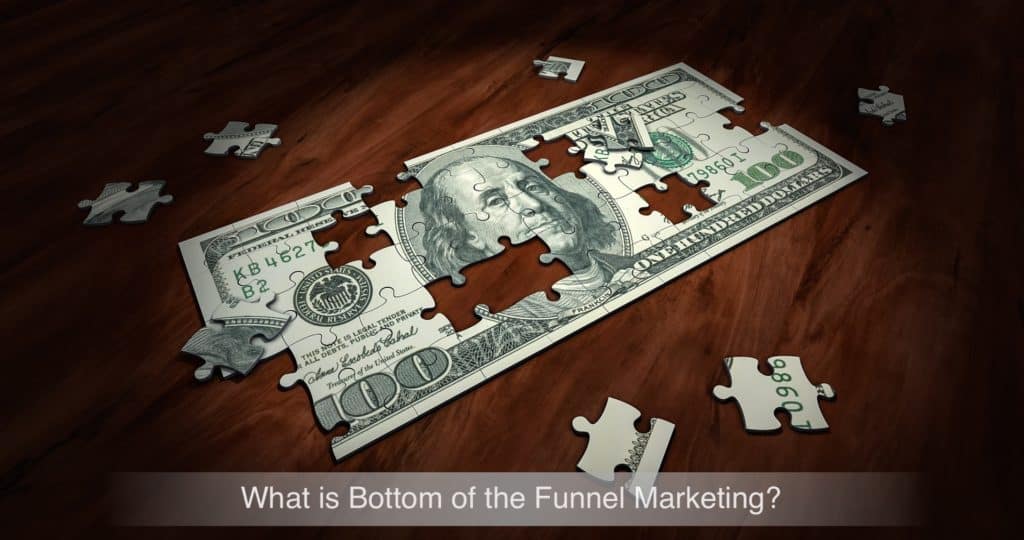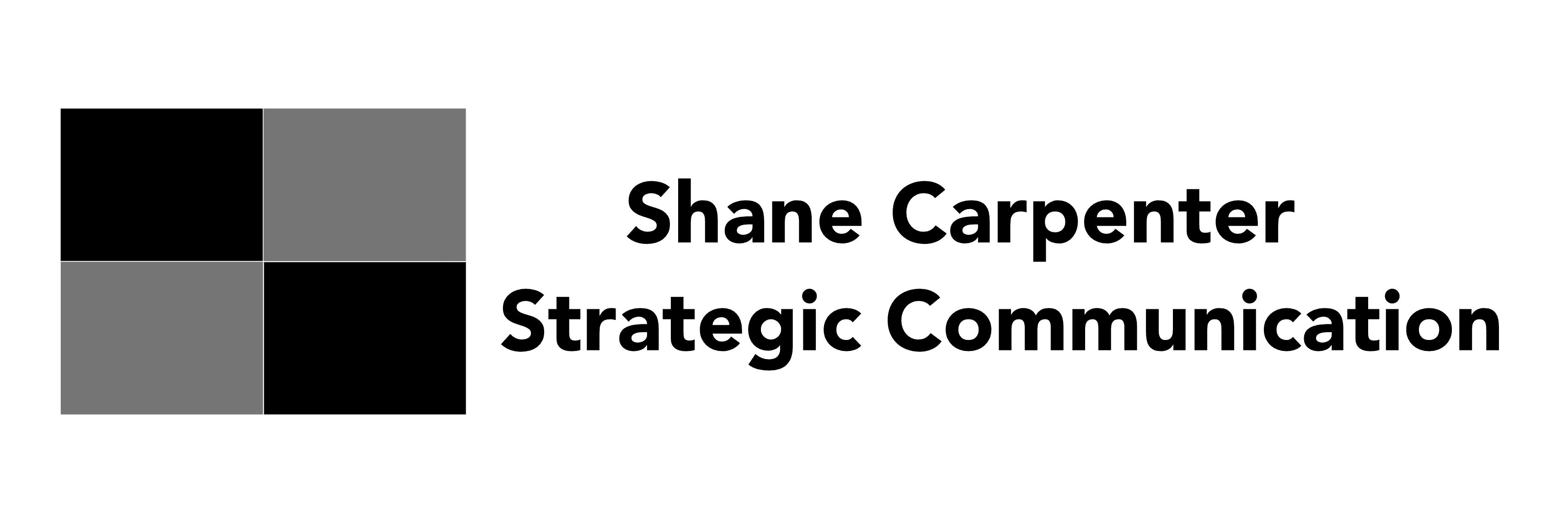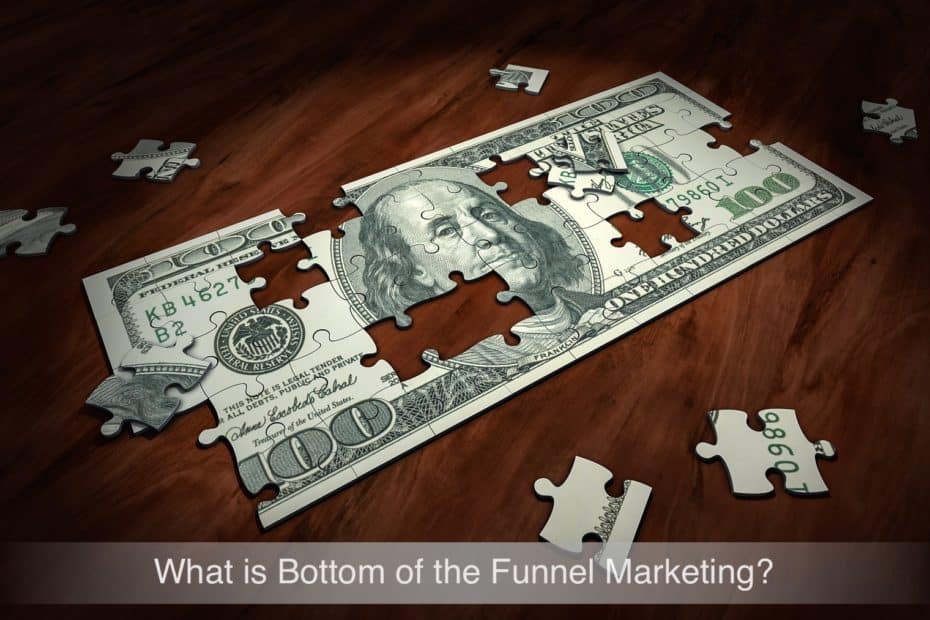
While it can take some time, the goal is always to get your prospects to the bottom of the funnel so they will make a purchase. This makes bottom of the funnel marketing crucial.
It used to be that you would see your prospects all the way through the funnel but with the advent of the internet, that’s not true anymore. In fact, chances are good that the first time you even become aware of your lead is when they are at the bottom of the funnel.
This is why top of the funnel and middle of the funnel marketing is so important.
As you have gone through this series we have broken down each step of the funnel into five areas. We will do the same for this article. The five areas are:
- Bottom of the Funnel Meaning
- Bottom of the Funnel Leads
- The Objectives of Bottom of the Funnel Content
- Bottom of the Funnel Content
- Bottom of the Funnel Marketing
Bottom of the Funnel Meaning
Before I can talk about the meaning for the bottom of the funnel we can share, there needs to be a common understanding of how we are looking at this.
I’ve talked about three concepts in the past that are different enough to have different labels but have much in common. These concepts are the marketing funnel, the buyer’s journey, and the five levels of awareness. When I talk about the different levels of the funnel, I’m pulling these three concepts together.
I define the marketing funnel as:
- Awareness
- Interest
- Consideration
- Conversion
- Retention
- Evangelism
At the bottom of the marketing funnel, you are moving your lead from consideration to a sale.
The buyer’s journey is defined as:
- Awareness
- Research
- Purchase
- Advocacy
In this model, you are interested in your prospect making a purchase.
The five levels of awareness concept, developed by Eugene Schwartz in his book Breakthrough Advertising, is defined as:
- Unaware
- Problem Aware
- Solution Aware
- Product Aware
- Most Aware
At this point, you are targeting the product aware and the most aware.
The product aware know what you sell but isn’t sure that it’s right for them. Reassurance is needed so they feel they are making the right choice.
The most aware know all about you and your product. Chances are they know as much about the product as you do. They are proactive and search for anything they can find. The most aware want to buy they just need to know the deal.
By the time somebody has got to the bottom of the funnel, people have a good understanding of your organization, product/service, and how it could solve their problem.
Prospects at the bottom of the funnel are ready to buy but that’s no guarantee that they will.
You might be thinking that your salespeople are converting them at this point but that’s not necessarily true. They may not even talk to a salesperson before they decide to buy which means your marketing still has work to do.
Bottom of the Funnel Leads
Don’t think that just because your prospect is at the bottom of the funnel that you have the sell. I’ve been at the bottom of the funnel and walked away because I couldn’t get the final pieces of information to pull me into a purchase. There have also been times where I got to the bottom of the funnel only to pull myself back to the middle because I didn’t feel completely comfortable.
You may find it maddening that you have a prospect that was at the bottom of the funnel only to jump back up to the middle of the funnel but it could be worse. They could leave the funnel altogether.
At the bottom of the funnel, your leads want to know that they are getting good value and trust you. It sounds really simple but it can be complicated.
Just because people move to the bottom of the funnel doesn’t mean that won’t pack up and go back to the middle of the funnel.
Bottom of the Funnel Objectives
You have one objective with bottom of the funnel marketing: a sale.
If your prospects have come this far, they are aware of your expertise but they may not fully trust you yet. That sounds odd. If they don’t fully trust you, why would they be at the bottom of the funnel?
Maybe they really want to trust you but have been burned in the past or it could be that even though they don’t fully trust you, they trust your competitors even less.
I can’t tell you how many times I’ve gone to the store to make a big purchase only to talk myself out of it when I got there. While you might think that they fully trust you at this point, they may still be a little hesitant for whatever reasons so you may still have some work to do (this is why salespeople earn the big bucks).
I’ll give you a personal example. I was looking at a product that I thought would make my life easier. I’d been consuming content on this company’s website and following them on social. I didn’t doubt their expertise and they had built authority.
The only missing was the trust. Would this product really do what it says it will do? I’ve been burned too many times by company’s that overpromised and underdelivered so I was hesitant. I even demoed it but didn’t buy it. I was jumping back and forth between the middle of the funnel and the bottom of the funnel.
Every piece of marketing was textbook. If I was teaching a class on marketing, I would have held them up as an example but sometimes people don’t fit the mold exactly. It could also be that the textbook is outdated.
I bring this up because it’s easy to give up and decide that your prospect isn’t right for you but as I’ve said in the past, it’s not about you it’s about them. If you make it about you, there is a good chance you will lose the sale.
This doesn’t mean you should put all your energy into chasing a sale that may never happen but it is a reminder that sometimes your prospect is working through a process and how you support them in this process can make all the difference. I’ve had companies tell me that they didn’t want my business because I wasn’t purchasing based on their timeframe.
Word of mouth is a killer. If you treat a prospect like this not only will they never consider in the future, they will tell everybody to avoid you. They may not be a good fit but be careful how you tell them.
In my particular case, what finally pushed me to pull the trigger and purchase this product was something that nobody in marketing, public relations, or even sales would have ever considered. It was not textbook at all.
My biggest influencer, Gini Dietrich (shocking I know), had raved about this product. It was why I demoed it in the first place but it was a joke that ended up being a trigger to buy. Gini said she liked this product so much that she would marry it. The company sent her flowers with a note saying they accepted her proposal which she shared with her community.
That was it for me. I thought, these are my kind of people, and I purchased from them. I would add that at no point did I ever speak to anybody at the company prior to purchase.
Bottom of the Funnel Content
I run a PESO agency so it only makes sense that I would talk about bottom of the funnel content through the lens of the PESO model. For those who haven’t heard of PESO before, it stands for:
- Paid Media
- Earned Media
- Shared Media
- Owned Media
Check out this article if you want to get more info on the PESO model. Caught up? Good.
At this point, prospects are aware of you. You’ve shown your expertise and built trust while showing them that you understand their problem.
At the top of the funnel, the content was more high level. As you got into the middle funnel it’s started to become more detailed. At the bottom of the funnel, content needs to be very specific.
The issue is that the most aware and the product aware are coming at the sale from different angles and this is going to impact the type of content you need to produce.
For the most aware they are looking for information such as cost, any guarantees, and what’s next. They are wanting to know how this all works.
For some of you, it’s cut and dry. They get the price, they purchase, you hand over the product and they are on their way but not everything works like that.
In my case, we have to talk about signing contracts, payment, scheduling a planning session, getting access to tools, providing point of contact information, and setting up touchpoint meetings. Setting expectations is part of the sales process for me because of the service I offer.
The content at this level is about answering questions. A frequently answered question list is really helpful at this point. You could put this on your website or it could be an email. It could even be a video. This is all owned media.
For the product aware, it’s a little more complex. They need reassurance. The owned media content needs to address this. Again, it can come in the form of content on your website or in an email. This is where testimonials come in. Live Q&A sessions are also good.
More than likely you won’t have to worry about anything more than owned media for the most aware but the product aware will still need a little more from you so paid media in the form of retargeting can potentially help. Shared media that provides the reassurances they need or points to these reassurances on your website can also be helpful.
But what about earned media? Well, earned media is about creating awareness and interest. It’s already done its job so it’s not something you are going to be focusing on at the bottom of the funnel but, keep in mind, you never know how earned media might impact somebody who is at the bottom of the funnel.
Depending on what you sell and how you can sell it (digitally vs. in person) can impact the delivery of your bottom of the funnel content but not the type of information your customers need.
In past articles, I’ve talked about the importance of talking to your prospects to find out what’s important to them so you can create top and middle of the funnel content. You should also talk to your customers to find out why they purchased from you. This will help you create the type of content that pull prospects to purchase.
Bottom of the Funnel Marketing
Now let’s look at this from the lens of PESO. In the previous section, I told you that earned media isn’t going to play a part at this stage but paid, shared, and owned (especially owned) will still play a part.
Let’s look at an example. To make it easy we’ll repurpose the example that I used in the middle of the funnel marketing.
You have worked in public relations (PR) and marketing agencies for 25 years and you’ve decided to use that knowledge as a consultant. You want to help people who own agencies, like me, grow their businesses. Your product is a twelve-week online class that will show me how to do this and it will include weekly one hour meetings with you so we can talk about any issues I’m experiencing and give me some coaching.
I’m one of the most aware prospects so how does the marketing play out?
In this situation paid and shared media aren’t really going to be a great help. I’m looking for details. More than likely you and I are having a conversation at this point either on the phone or in-person but owned media can still be a help in closing me out.
You’re probably not sending me to a testimonial video but you might refer to me to a FAQ page prior to our conversation that you sent me via email. Or maybe the email itself addresses some of the FAQ’s. Either way, this can help make our real-time conversation smoother.
If I’m product aware you can still do the above but some testimonials are going to be influential in helping convert me to a sell. The testimonials could be in writing or in the form of videos. All of this is owned media but you could share this type of information on shared media (testimonials can help move people through the funnel by creating trust) or you could email me with testimonials.
Do not underestimate a personal touch with your content or the power of personality. It can go a long way in your content at all levels especially at the bottom of the funnel.
I purchased a product based on a joke but the fact that they played along with the joke told me that they were my kind of people. There are a hundred products out there that do basically the same thing but they showed some personality that helped me connect with them and made me comfortable buying from them.
A Quick Review
I thought this would be the shortest post of this series but it may be the longest so let’s wrap it up.
This is what you should remember about bottom of the funnel marketing:
- It is targeting those who are product aware or most aware.
- Your objective is the sale.
- Content needs to be very specific.
- It’s not about you, it’s about them
*Image by Arek Socha from Pixabay
- Is Your Marketing Connected? - March 6, 2025
- Stop Planning and Start Strategizing - October 24, 2024
- The Importance of Creating a Connection With Your Marketing - June 6, 2024

